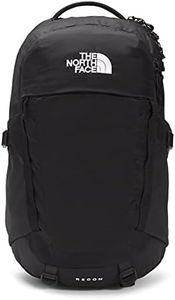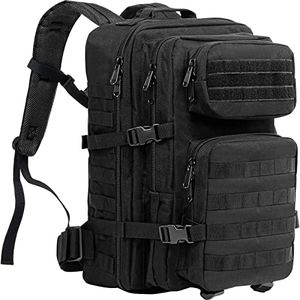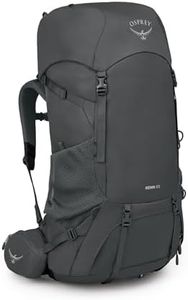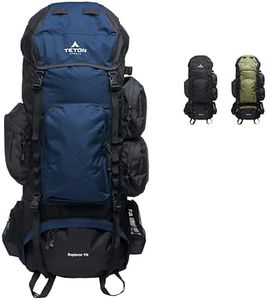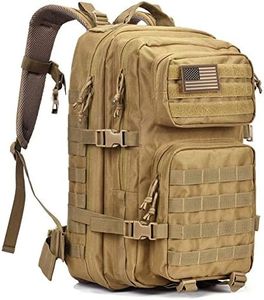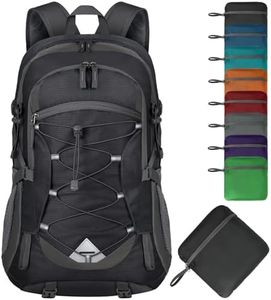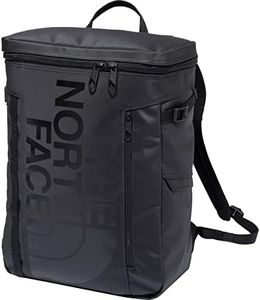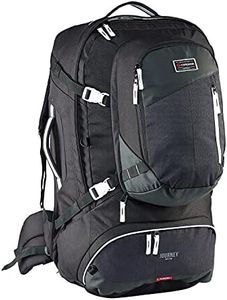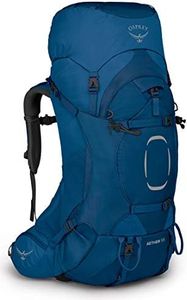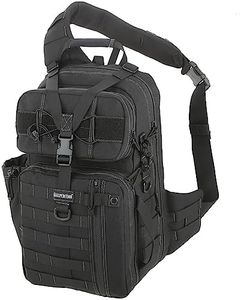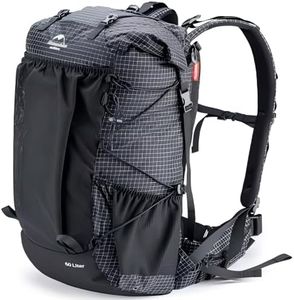We Use CookiesWe use cookies to enhance the security, performance,
functionality and for analytical and promotional activities. By continuing to browse this site you
are agreeing to our privacy policy
10 Best Survival Backpacks
From leading brands and best sellers available on the web.Buying Guide for the Best Survival Backpacks
Choosing a survival backpack is about finding the right balance between comfort, durability, and carrying capacity for your unique needs. When selecting a backpack for survival, it’s important to consider how long you plan to be in the wilderness, what types of environments you might face, and your own physical abilities. Think about what gear is essential for you, and remember that the right backpack should help you organize and carry those items efficiently. Focus on finding a backpack that’s comfortable to wear for long periods, tough enough to withstand the elements, and just big enough for your gear without being overly bulky.Capacity (measured in liters)Capacity is the total volume the backpack can hold, measured in liters, and it determines how much gear you can take with you. Small backpacks (20-40 liters) are good for short trips or minimalist survivalists, as they encourage you to bring only the essentials. Medium backpacks (40-60 liters) strike a balance between space and portability, suitable for multi-day survival scenarios where you need more supplies like food, clothing, and shelter gear. Large backpacks (60+ liters) are designed for extended outings or when traveling with group supplies. Your choice should depend on how long you plan to be out and how much gear you need; always avoid going too large, as overpacking can be a burden.
Material and DurabilityThe material of the backpack impacts its ability to handle rough situations and protect your belongings. Common materials include nylon and polyester, with higher denier counts indicating stronger fabrics. Lightweight materials may be more comfortable for shorter treks but can wear out quickly, while heavier-duty materials withstand thorns, abrasion, and rain but add weight. Pick a material that matches your environment: rough terrain and heavy use call for tough, water-resistant fabrics, while milder environments might allow for lighter options.
Comfort and FitComfort is mainly determined by the backpack’s design: padded shoulder straps, adjustable hip belts, and an ergonomic frame all help distribute weight properly. Backpacks not suited for your body type or poorly padded can cause fatigue or pain on long journeys. Smaller backpacks can get by with simpler straps, but as capacity grows, more support is needed. Always try to pick a backpack with adjustable straps and try it on (ideally with weight) to ensure it fits well and feels comfortable, as you might be carrying it for hours or days.
Organization and CompartmentsA good survival backpack should make it easy to organize your gear. Multiple compartments, pockets, and attachment points (like MOLLE webbing) help keep frequently used items accessible and separate things like wet gear from dry. Packs with many pockets suit those who carry a variety of gear and want quick access, while simpler packs may appeal to those who pack light or want fewer zippers and less risk of catching on branches. Consider your packing style and organizational needs when evaluating compartment layouts.
Water ResistanceWater resistance protects your gear from getting wet in rain or when crossing water. Some backpacks are made from waterproof materials, while others rely on included rain covers or require you to pack items in dry bags inside the backpack. If you expect to encounter unpredictable weather or wet environments, prioritize backpacks with built-in water resistance or at least with rain covers. In dry climates, this may be less critical, but it’s still a useful feature.
Weight of the BackpackThe backpack’s own weight matters, as heavier packs will add to your load before you even start packing. Lighter backpacks are easier on your body but might compromise on durability and features, whereas heavier ones may be more rugged or offer more support. Match the backpack’s weight to your physical condition and the amount of gear you plan to carry. If you are fit and need extra support, a heavier, framed pack might suit you; if you are prioritizing speed or ultralight travel, look for lightweight options with minimal features.
